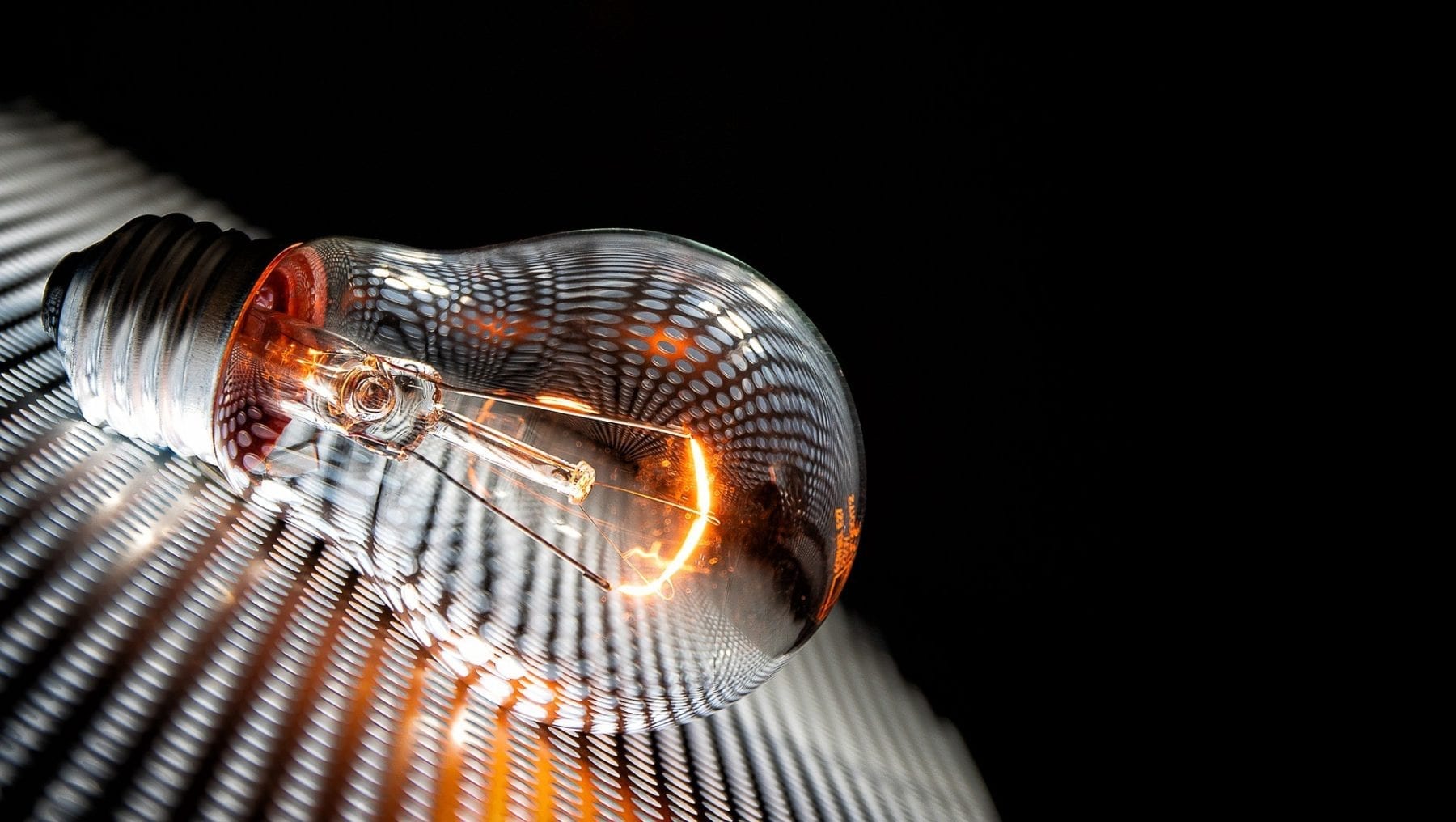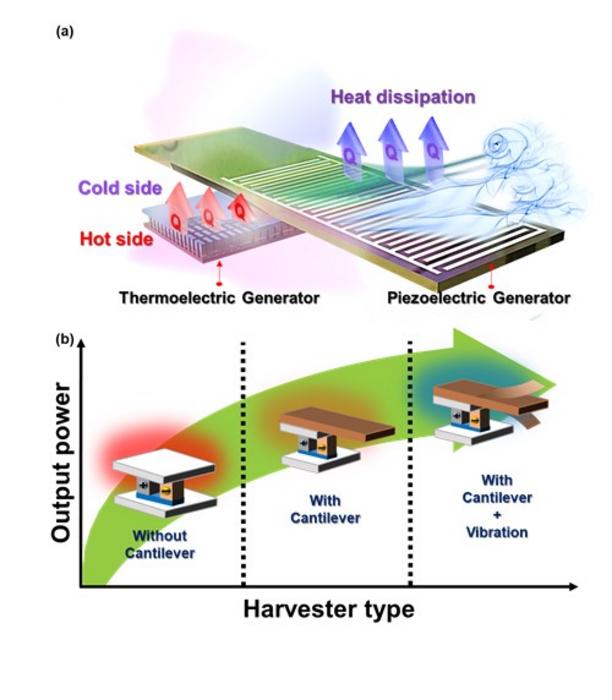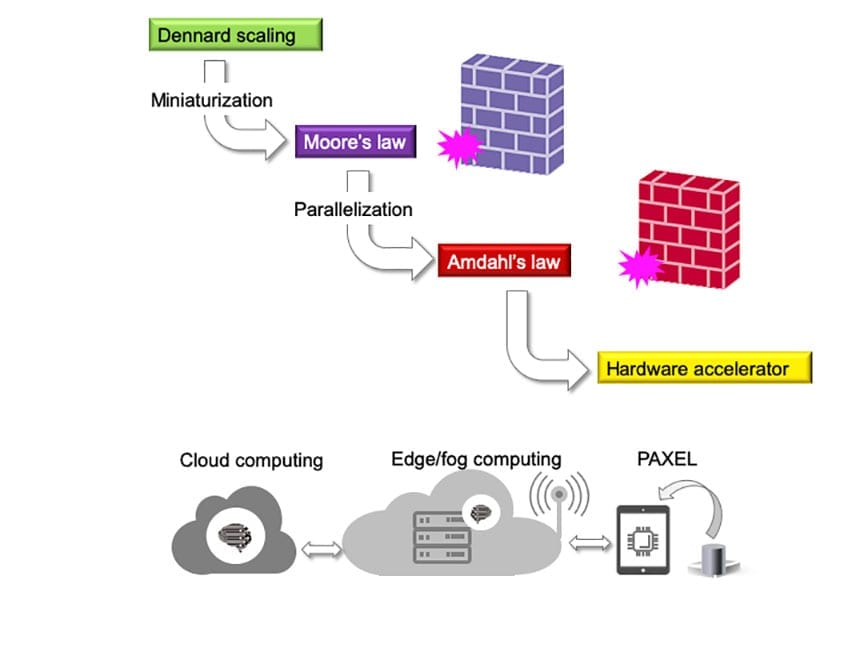
Scientists find new way to capture heat that otherwise would have been lost
An international team of scientists has figured out how to capture heat and turn it into electricity.
The discovery, published last week in the journal Science Advances, could create more efficient energy generation from heat in things like car exhaust, interplanetary space probes and industrial processes.
“Because of this discovery, we should be able to make more electrical energy out of heat than we do today,” said study co-author Joseph Heremans, professor of mechanical and aerospace engineering and Ohio Eminent Scholar in Nanotechnology at The Ohio State University. “It’s something that, until now, nobody thought was possible.”
The discovery is based on tiny particles called paramagnons—bits that are not quite magnets, but that carry some magnetic flux. This is important, because magnets, when heated, lose their magnetic force and become what is called paramagnetic. A flux of magnetism—what scientists call “spins”—creates a type of energy called magnon-drag thermoelectricity, something that, until this discovery, could not be used to collect energy at room temperature.
“The conventional wisdom was once that, if you have a paramagnet and you heat it up, nothing happens,” Heremans said. “And we found that that is not true. What we found is a new way of designing thermoelectric semiconductors—materials that convert heat to electricity. Conventional thermoelectrics that we’ve had over the last 20 years or so are too inefficient and give us too little energy, so they are not really in widespread use. This changes that understanding.”
Magnets are a crucial part of collecting energy from heat: When one side of a magnet is heated, the other side—the cold side—gets more magnetic, producing spin, which pushes the electrons in the magnet and creates electricity.
The paradox, though, is that when magnets get heated up, they lose most of their magnetic properties, turning them into paramagnets—“almost-but-not-quite magnets,” Heremans calls them. That means that, until this discovery, nobody thought of using paramagnets to harvest heat because scientists thought paramagnets weren’t capable of collecting energy.
What the research team found, though, is that the paramagnons push the electrons only for a billionth of a millionth of a second—long enough to make paramagnets viable energy-harvesters.
The research team—an international group of scientists from Ohio State, North Carolina State University and the Chinese Academy of Sciences (all are equal authors on this journal article)—started testing paramagnons to see if they could, under the right circumstances, produce the necessary spin.
What they found, Heremans said, is that paramagnons do, in fact, produce the kind of spin that pushes electrons.
And that, he said, could make it possible to collect energy.
Learn more: A new way to turn heat into energy
The Latest on: Turning heat into electricity
[google_news title=”” keyword=”turning heat into electricity” num_posts=”10″ blurb_length=”0″ show_thumb=”left”]
via Google News
The Latest on: Turning heat into electricity
- These 4 charts show the world just passed a major clean energy milestoneon May 8, 2024 at 1:00 am
The world has passed a clean energy milestone, as a boom in wind and solar meant a record-breaking 30% of the world’s electricity was produced by renewables last year, new data shows. The planet is ...
- Report: Renewables Generating Nearly One-Third of Global Electricityon May 7, 2024 at 5:00 pm
A UK- based global research group said continued growth in wind and solar power increased power generation from renewable energy ... a turning point where solar and wind not only slow emissions growth ...
- Save Money on Your AC Bill During Heat Waves This Summeron May 6, 2024 at 5:22 pm
AC bills can do a number on your finances -- but staying savvy with your air conditioner can help you stay cool without breaking the bank. Here's how to prep for summer heat waves.
- The One Thing That’s Holding Back the Heat Pumpon May 6, 2024 at 4:01 am
If billionaires actually cared about saving the planet, they’d pool their vast wealth and buy everyone a heat pump. But it’s not funding, or the technology itself, that’s preventing a full heat pump ...
- 5 essential gadgets for turning your home into a self-care sanctuaryon May 2, 2024 at 2:58 am
While some people gain energy from going out and talking to people, others gain it from staying at home. Spending a cosy night in can be a comforting and restorative experience, whether you're curling ...
- MIT Technology Reviewon April 14, 2024 at 5:00 pm
Antora Energy similarly uses its carbon-based blocks to both generate and store heat. The company is also aiming to turn that heat back into electricity using thermophotovoltaic technology.
- Liquid Tin Could Be The Key To Cheap, Plentiful Grid Storageon January 7, 2024 at 11:09 pm
Simple heating elements turn electricity into heat, putting it into liquid tin that then heats large graphite blocks. Credit: Fourth Power, Vimeo screenshot The principle behind Fourth Power’s ...
- You Should Lock This Temperature Into Your Thermostat to Save Moneyon July 17, 2022 at 11:16 am
Some people prefer turning the heat down at night when they ... in the summer will slow the flow of heat into your home, which results in energy and money savings. In addition to following ...
- Generating electricityon April 27, 2022 at 8:32 am
Electricity is generated by converting a different form of energy into electrical energy ... the steam it produces is then used to turn turbines. The heat energy is transferred to kinetic energy.
- Turning Heat Into Electricityon August 28, 2021 at 6:57 pm
Tin selenide is known to have good performance converting heat into electricity when in its crystal form. However, practical applications are more likely to use polycrystalline forms, which are ...
via Bing News










